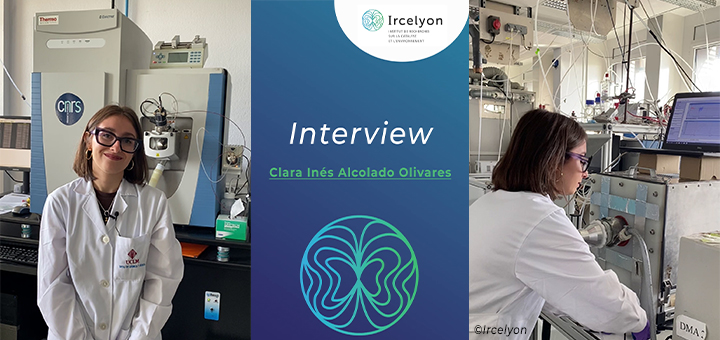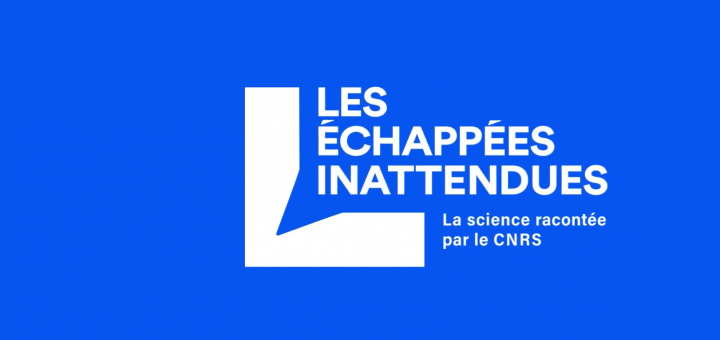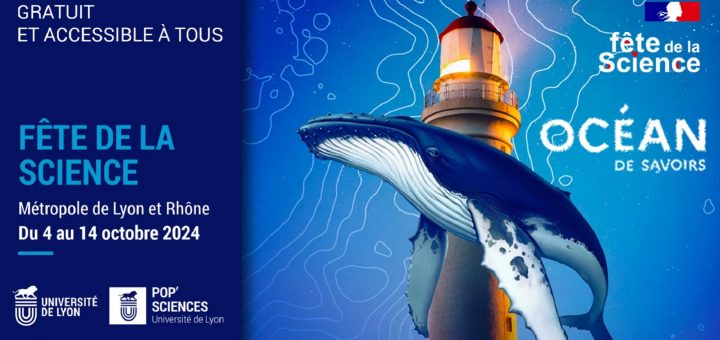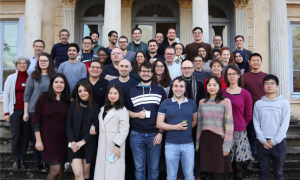
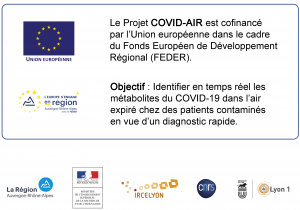 |

More information on this dedicated page: |
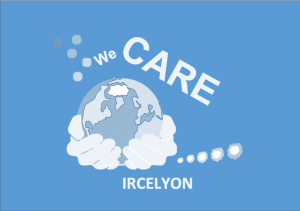
Introduction
The CARE team is positioned at the intersection of many major social issues related to water resources, waste recovery, air quality, and climate change. Its research is based on the association of strong expertise and efficient analytical parc in order to characterize, eliminate and promote pollutants. By being at the interface between environmental sciences, heterogeneous catalysis, analytical chemistry, and electrochemistry, the CARE team develops innovative remediation methods (photocatalysis, electrochemical promotion of catalysis, …), process coupling (catalysis-photocatalysis, catalysis-electrochemistry, etc.), chemical analysis (high-resolution mass spectrometry) and studies in order to characterize atmospheric processes.
Research areas
Atmospheric Processes
Air pollution remains a major problem in urban and suburban areas impacting health and Earth Climate. This is due to the large emissions of gaseous and particulate compounds. However once in the atmosphere, their physico- (photo) chemical changes remain extremely uncharted, limiting our capabilities to improve air quality. As a result, understanding how aerosol form and evolve within the atmosphere is the main research targets of the team. More particularly, the understanding of the physicochemical and photochemical processes involved in the growth of the finest particles is one of the major research themes. In addition, the health impact of these ultrafine particles is also studied through collaborations involving different actors (biologists, doctors, etc.) to characterize in an unprecedented way the impact of particles on different cellular and pulmonary systems. Such a complementary approach is not only logical but also strategic since the World Health Organization regularly highlights the extent of the global health problem related to particle exposure. In order to fully tackle these experimental challenges, new analytical developments are being conducted. They rely on developing new couplings between soft ionization techniques and high-resolution mass spectroscopy.
Catalytic degradation of pollutants
The formulation of catalytic pollution control materials must constantly evolve to comply with ever more strict rules in terms of emission level (ambient air, homes, workplaces, environment) and operating time, but also to anticipate the predicted decline in global resources of some active elements such as noble metals. The CARE team has strong and specific skills to tackle these challenges including lowering the operating temperatures of catalysts and limiting or even eliminating the use of noble metals.
Hence, the team is studying new materials and processes for the treatment of pollutants in air and water, with the aim of improving the efficiency and the durability of the catalysts. To reach this objective the Team is improving the accessibility of the active sites (i.e., core-shell morphology, redox exsolution of nanoparticles, dynamic properties of the metal/support interfaces) and kinetics (i.e., assisted catalysis, process coupling). With regard to automotive emission control, one of the main research areas concerns targeted pollutants with the gradual decline in the dieselization rate in Europe associated with the development of new engines and new fuels. In this context, the Team is focusing on proposing solutions to reduce/vanish emissions of ultrafine particles, methane and nitrogen compounds such as nitrous oxide and ammonia but also on increasing the efficiency of low-temperature post-treatment system, especially for the cold start of the engine.
Organic waste recovery
The team also focuses on the recovery of organic pollutants using photocatalytic and electrocatalytic processes. The production of high-valuable chemicals and/or energy carriers (H2) from sustainable sources such as highly polluted industrial effluents and organic wastes remains a major challenge for the replacement of oil products. Indeed, resources must be limited to fight against Climate change (i.e., production of greenhouse gases). Thus, the use of photocatalytic processes is an important research axis allowing the transformation of organic pollutants. In collaboration with CDFA, the team is developing new concepts for hydrothermal transformation of cellulosic substrates assisted by photocatalysis. This photocatalytic approach also involves the development of new photocatalysts having optimized properties, e.g., controlled nanomorphology or the formation of inorganic-organic hybrid composites. The recovery of pollutants and organic waste is also characterized by electrocatalytic and photoelectrocatalytic processes. One of the main objectives is to develop the electrolysis of organic waste (lignin, plastic) for the production of pure hydrogen.
Research projects
European Fundings:
| MAARvEL ERC-Starting Grant (2020-2025): A Missing Key Property in Atmospheric AeRosol ChEmistry: the Laplace Pressure |
| SOFA ERC-Advanced Grant (2022-2026): Spontaneous interfacial oxidant formation as a key driver for aerosol oxidation.
It was very recently shown that the local orientation of water molecules at an air/water interface generates spontaneous radicals in micron-sized droplets. The SOFA project aims to unravel the atmospheric importance of this spontaneous interfacial oxidant formation. |
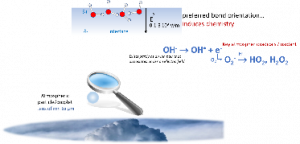 |
| EASVOLEE (2023-2026): Effects on Air quality of Semi-VOLatile Engine Emissions.
This project brings together leading European research groups, with state-of the-art observational and modeling facilities to: |
 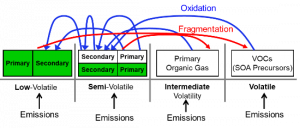 |
| ELOBIO (ELectrolysis Of BIOmass, lien vers site) (2023-2026)
This project aims at advancing biomass electrolysis as a novel technological mean of green hydrogen production. The project will design, build-up, test and improve a lab-scale prototype electrolysis cell at Technology Readiness Level 4, involving a selective electrocatalytic cathode for the hydrogen evolution reaction and an electrocatalytic anode capable of selectively oxidising biomass-derived compounds. In addition, considering that several emerging technologies rely on electrolysis assisted with an additional renewable source of energy, the concept of electrochemical promotion of catalysis, sonoelectrolysis and magnetoelectrolysis will be explored to further enhance the energy efficiency of the green hydrogen electrolytic production. |
  |
French National Research Agency Fundings:
| CHARO: Hierarchical CHAbazite core-shell catalysts for Reduction of NOx and N2O – CHARO,
The reduction of atmospheric pollution from stationary and mobile engines is a serious challenge associated with stringent environmental regulations. In this respect, revisiting after-treatment systems under the prism of disruptive concepts may significantly improve their eco- and health-friendliness. This is the standpoint of this project, which ambitions to develop novel catalysts combining several functionalities in extended ranges of operating conditions. https://anr.fr/Project-ANR-18-CE07-0014 |
| ICEPART (2023-2025): Are ice phase electrochemical processes in deep convective clouds inducing new particle formation in the upper troposphere?
Very recently, intense new particle formation (NPF) events have been observed in the UTLS, where ice formation and deep convection are predominant. The underlying mechanism is, however, only very qualitatively described. This project aims at unraveling those processes. |
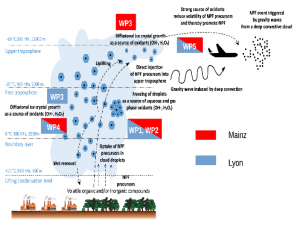 |
| SENSOX (2023-2025): photoSENSitized reactions: a new OXidant pathway in the atmosphere
This project aims at quantifying the tropospheric importance of photosensitized reactions in the tropospheric condensed phases (i.e., cloud droplet and aerosols) |
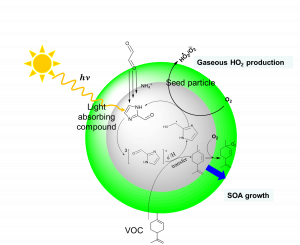 |
| SAFHYR (2022-2026): New catalysts for SAFe HYdrogen Release and use (abstract)
Stored by hydrogenation in liquid organic hydrogen carriers (LOHC), hydrogen transport becomes safe. An innovative process consists of transfer hydrogenation of acetone using perhydrodibenzyltoluene as a hydrogen-rich compound, producing dibenzyltoluene and isopropanol, the latter feeding a direct isopropanol fuel cell (DIPAFC). |
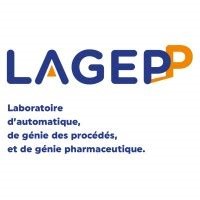 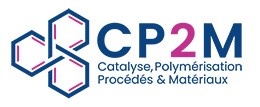 |
| MEGOPE (2022-2026): Mass spectrometry for more Efficient Green Organic Production by Electrocatalysis (abstract)
This project wants to tackle the one of the major challenges of our society: the decarbonation of our energy. It wants to make use of the biomass, by the mean of renewable energy associated to electrocatalysis, to pave the road to green production of essential base-molecules. To reach that goal, our project will develop a new methodology based on MS to unravel and improve the complex organic processes taking place in electrocatalysis. |
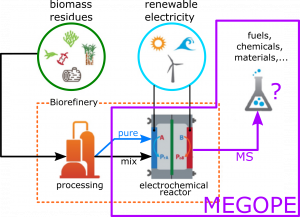 |
| DYCAT (2020-2023) : Dynamic Catalysts for the production of clean energy.
The DYCAT project objective is to unravel metal (Pt,Pd)/CeO2 interactions to tailor effective catalysts for energy production, such as the water-gas shift reaction for hydrogen production and the clean catalytic combustion of methane. https://anr.fr/Project-ANR-19-CE05-0038 |
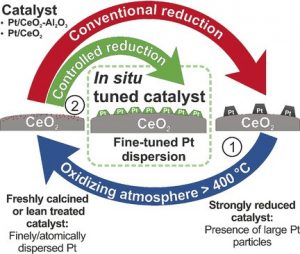 |
| H-to Clean (2022-2025) Passive in situ generation of additional reductant intermediates for the assisted green hydrogen engines NOX removal.
Tailor catalysts for the clean-up of hydrogen engines. https://anr.fr/Projet-ANR-21-CE05-0012 |
| PHOTHER (2018-2022): Transformation hydrothermale de substrats cellulosiques assistée par photocatalyse.
New concept and materials to develop molecules of interest and H2 at low cost. The objective is to replace petroleum resources with biomass to generate energy and/or manufacture platform molecules to synthesize drugs, plastics, etc. by developing a less energy-consuming concept, and new, more efficient and less expensive materials. Make the transformation of hydrolysable fractions of biomass into energy and platform molecules less energy-intensive and more selective https://anr.fr/Projet-ANR-17-CE06-0011 |
CNRS Fundings :
| 80|PRIME – NOSY-H2 (2020-2024): New systems for hydrogen storage (abstract)
The objective is to study the reaction of transfer between cycloalkanes and acetone to produce isopropanol and associated aromatics (150-250°C, 2-30 bars) in order to design and implement an efficient catalytic reactor. As the data on this process are scarce, different aspects will be addressed: kinetics, thermodynamics, reactor design, modeling. |
 |
Rhône-Alpes Auvergne Region Fundings:
| CAPCOMB (2021-2024) (En coll. avec Ecole des Mines de Saint-Etienne): Develop a NOx and NH3 sensor for the control of combustion processes and vehicles emissions. |
IDEX LYON Fundings:
| EN-CAS (2020-2022): Emergent Nanoparticles for CAtalysiS
The project aims to tailor innovative catalyst nanostructures using the concept of redox exsolution. This latter process deals with the emergence of metal nanoparticles from the bulk of perovskite oxides towards the surface under the impact of a chemical or an electrochemical reduction step. Our research effort will focus on emergent Ni particles, with the objective to substitute noble metals in catalytic processes. |
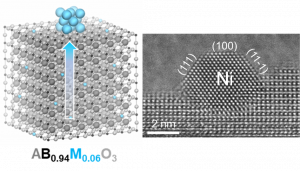 |
BPI France (PSPC régions) Fundings:
| QUALITY AIR (2020-2023): Air quality in aircraft cabins (abstract)
The objective of QUALITY AIR is to propose equipment to ensure a good quality of the air breathed in aircraft cabins. The project will develop sensors capable of detecting the presence of harmful pollutants. In parallel, multifunctional pollutant treatment equipment (catalytic conversion) will be developed. Finally, a test platform dedicated to air quality will be set up in order to validate the performance of the equipment under representative environmental conditions. |
|
Partnerships
National and International Collaborations:
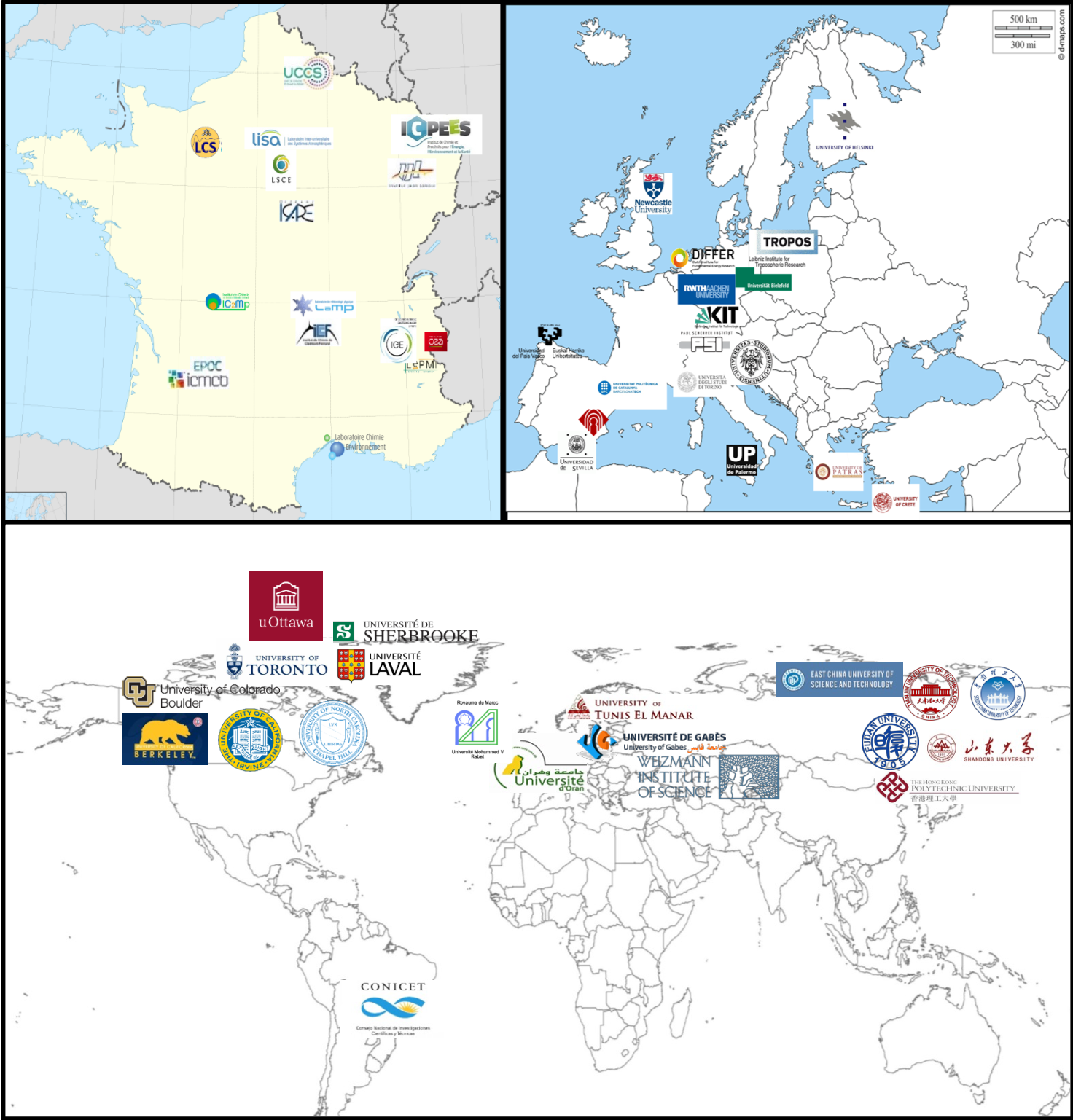
Industrial Collaborations
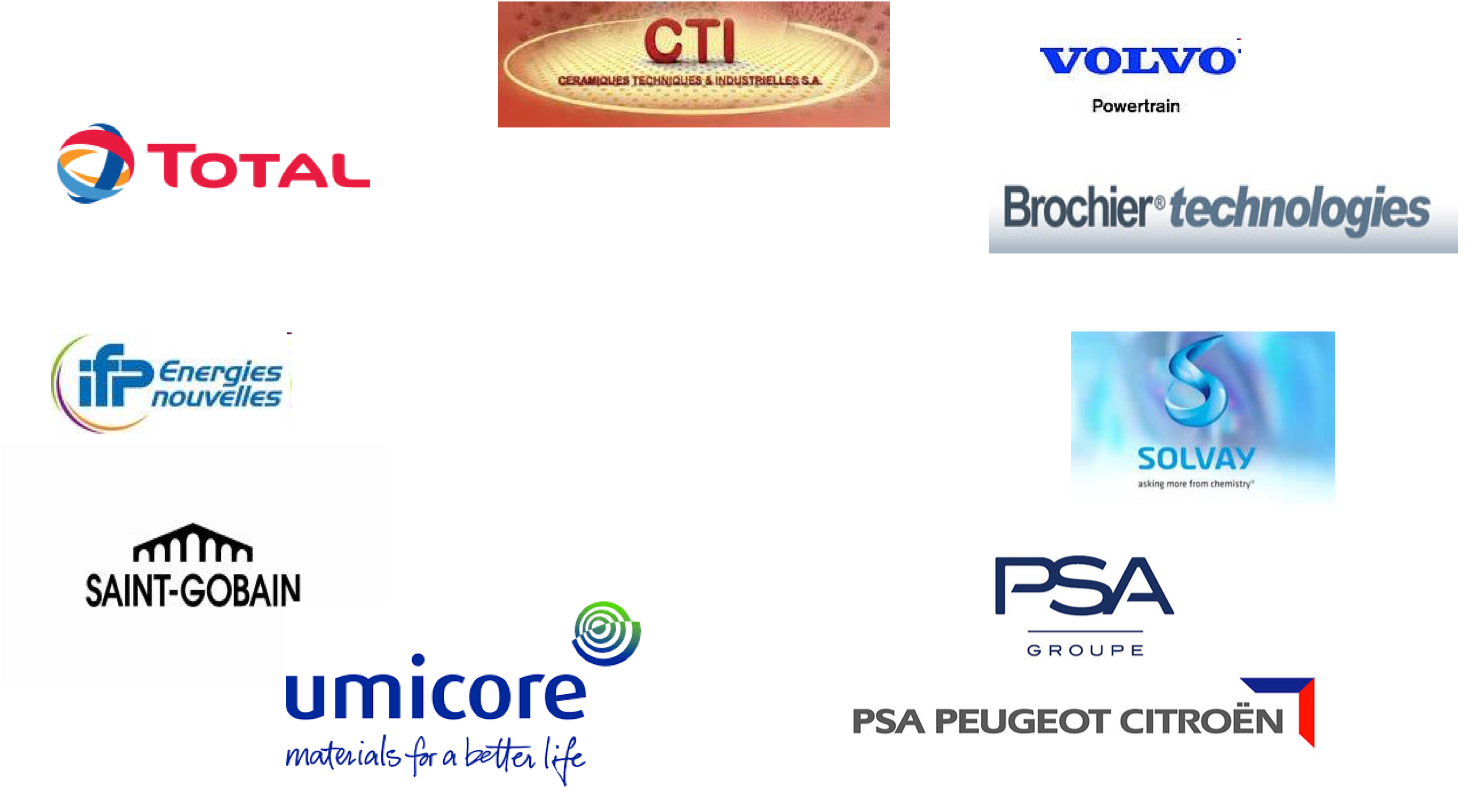
Staff
Researchers and University professors
Personnels techniques (en)
Postdoctoral fellows
PhD students
Interns
Publications
-
Humidity drives spontaneous OH oxidation of organic particles
SCIENCE ADVANCES, 2025, 11(25), p.
-
SCIENCE BULLETIN, 2025, 70(11), pp. 1846-1855
-
Ni-Based Catalysts for 5-Hydroxymethylfurfural Electrooxidation Coupled with Hydrogen Production
CHEMELECTROCHEM, 2025, p.
-
Environmental Science and Technology, 2025, p.
-
CATALYSIS TODAY, 2025, 454, p.





















































